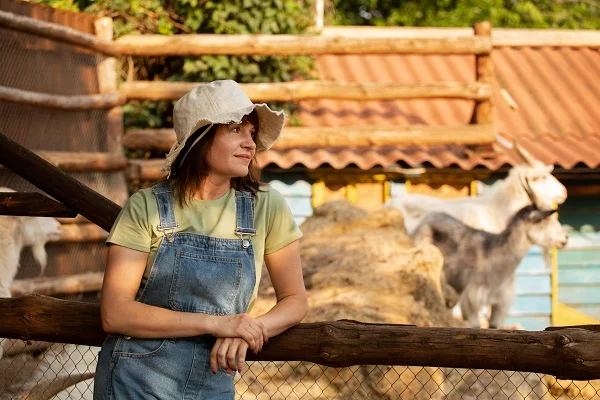In a quiet rural village nestled between green hills and flowing rivers, generations of families have lived the same way for centuries growing their food, cooking over wood fires, and sharing stories by the light of a lantern. This isn’t a scene from the past, but a present-day example of people who still live by the values and routines of a traditional lifestyle. While the modern world moves fast with technology, urban expansion, and globalization, there are still many who choose the slower, grounded rhythm of life that their ancestors once followed. But what does it really mean to live a traditional lifestyle, and how does it fit in with today’s rapidly evolving society?
Understanding the Meaning of Traditional Lifestyle
A traditional lifestyle generally refers to the way of life that reflects the customs, culture, and values passed down through generations. It is often rooted in practices that are sustainable, community-oriented, and closely connected to nature. From indigenous communities in the Amazon to rural farmers in India, traditional lifestyles are shaped by history, geography, and collective wisdom.
These ways of living are typically characterized by simplicity, a deep respect for the environment, and a strong emphasis on family and social connections. They prioritize needs over wants, preservation over consumption, and cooperation over competition. Whether it’s handcrafting tools, preparing meals from scratch, or engaging in seasonal rituals, the core of this lifestyle lies in mindfulness and purpose.
The Historical Significance of Traditional Living
Before industrialization and modern technologies reshaped societies, most people around the world led what we now consider a traditional lifestyle. Their routines were guided by the seasons, religious beliefs, and communal responsibilities. Skills were handed down orally or by apprenticeship, and there was a stronger emphasis on interdependence rather than individualism.
In pre-industrial Europe, for example, families worked together on their land, each person playing a role in food production, home maintenance, or livestock care. Festivals, weddings, and funerals were community events, rich with symbolic meaning. Similarly, in many African and Asian societies, elders played an essential role in decision-making and preserving the cultural heritage through storytelling, song, and ceremony. While modern conveniences have improved healthcare, education, and communication, many believe that the loss of these traditional ways has led to disconnection, stress, and environmental degradation. Revisiting these ancient practices doesn’t mean rejecting progress, but rather finding a balance between the old and the new.
The Benefits of a Traditional Lifestyle Today
Even in the 21st century, adopting elements of a traditional lifestyle can offer numerous benefits. Firstly, it promotes sustainable living. Practices such as organic farming, natural building techniques, and using local resources help reduce the carbon footprint and dependency on industrial systems.
Secondly, the emphasis on community and family creates a strong support network that is often missing in urbanized societies. Studies have shown that individuals who live in tight-knit communities or with extended family members often experience lower levels of anxiety and depression. Additionally, the slower pace of a traditional lifestyle encourages mindfulness and well-being. Taking time to cook, garden, or create by hand provides therapeutic benefits and reconnects individuals with the present moment. It also allows for deeper appreciation of the simple pleasures of life, like a homemade meal, a walk through the woods, or a heartfelt conversation.
Challenges of Maintaining a Traditional Lifestyle
Despite its benefits, living a traditional lifestyle in the modern age is not without challenges. Economic pressures, lack of infrastructure, and limited access to education and healthcare often push younger generations toward cities and more contemporary ways of living.
Globalization also plays a role in eroding traditional cultures. As media, fashion, and consumerism penetrate even the most remote corners of the world, traditional practices may be viewed as outdated or irrelevant. This leads to the gradual disappearance of languages, rituals, and knowledge systems that have existed for centuries. Moreover, policies and land rights issues in many countries threaten the ability of indigenous or rural communities to sustain their way of life. Displacement for development projects, environmental degradation, and lack of political representation are constant obstacles.
Modern Adaptations of Traditional Values
In response to these challenges, many people and communities have found innovative ways to preserve and adapt the traditional lifestyle. Some have created eco-villages that blend modern amenities with old-world practices. Others have started cultural revival programs to teach youth about traditional music, crafts, and ceremonies. One growing movement is the “slow living” or “minimalist” lifestyle, which shares many similarities with traditional living. These movements encourage people to consume less, produce more, and live intentionally principles that align closely with ancestral wisdom.
Even in urban settings, individuals are finding ways to integrate traditional values. This may include cooking meals from scratch using family recipes, practicing home remedies, growing herbs in small spaces, or attending cultural festivals. Through these practices, people rediscover a sense of identity and purpose that often gets lost in the noise of modern life.
The Role of Technology and Tradition
Interestingly, technology doesn’t always stand in opposition to tradition. In many cases, it can be used to preserve and promote traditional lifestyles. For example, digital archives help document endangered languages, while social media enables cultural exchange and education. Artisans can now sell handmade goods online, reaching global markets while maintaining traditional techniques.
This intersection of technology and tradition can create a hybrid way of life that respects the past while embracing the future. The key lies in mindful usage ensuring that technology serves to uplift and sustain cultural practices rather than replace them.
Traditional Lifestyle and Environmental Sustainability
Perhaps one of the most urgent reasons to revisit the traditional lifestyle is its alignment with ecological balance. Traditional knowledge systems often include practices that protect biodiversity, conserve water, and maintain soil health. For instance, rotational grazing, companion planting, and rainwater harvesting are age-old techniques that modern sustainable agriculture now promotes.
In times of climate crisis, these practices offer viable solutions that are both time-tested and adaptable. They remind us that living in harmony with the earth is not a new concept it’s something our ancestors understood deeply and lived by instinctively.
Preserving the Traditional Lifestyle for Future Generations
To ensure that the traditional lifestyle remains a living culture and not just a nostalgic memory, both individual and collective efforts are necessary. Educational programs, cultural preservation initiatives, and policy changes can help protect and revitalize traditional ways of living. Parents and elders can play a key role by teaching younger generations the values, stories, and skills that define their heritage. Schools can incorporate local history, crafts, and ecological knowledge into their curriculum. Governments and NGOs can provide support through funding, legal protections, and platforms for cultural exchange.
Ultimately, preserving the traditional lifestyle is about valuing the wisdom of the past and understanding its relevance in our modern context. It’s about making conscious choices that honor our roots, respect nature, and prioritize human connection over consumerism.
Conclusion: A Path Back to Meaning
As our world becomes increasingly fast-paced and digitally driven, many are searching for meaning, connection, and simplicity. The traditional lifestyle offers a guiding light a reminder of what it means to live with purpose, harmony, and community. While we cannot turn back time, we can choose to carry forward the lessons of the past in ways that enrich our present. Isn’t it time we asked ourselves what we truly value and what kind of life we want to pass on to future generations?





